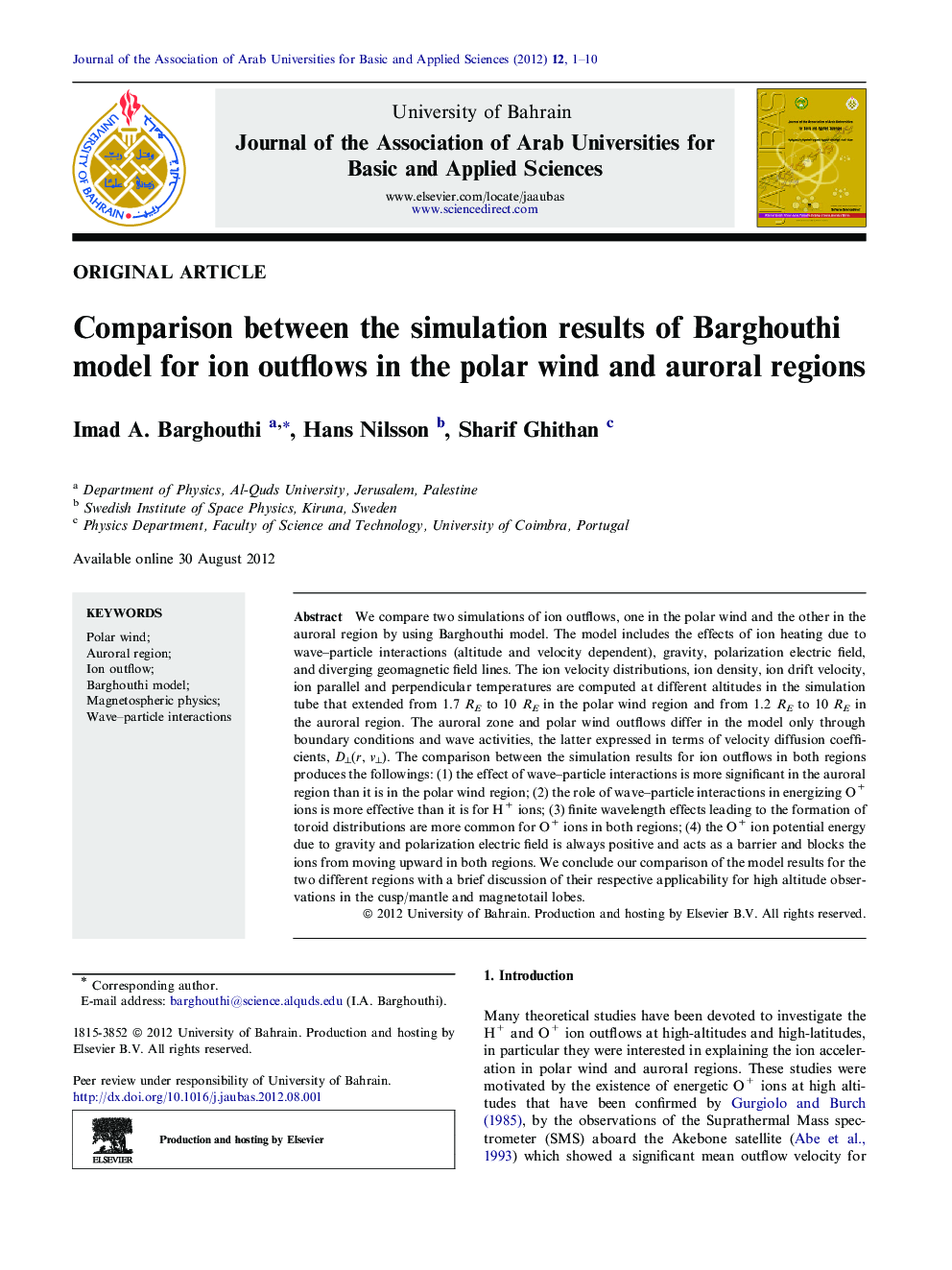| Article ID | Journal | Published Year | Pages | File Type |
|---|---|---|---|---|
| 1261206 | Journal of the Association of Arab Universities for Basic and Applied Sciences | 2012 | 10 Pages |
We compare two simulations of ion outflows, one in the polar wind and the other in the auroral region by using Barghouthi model. The model includes the effects of ion heating due to wave–particle interactions (altitude and velocity dependent), gravity, polarization electric field, and diverging geomagnetic field lines. The ion velocity distributions, ion density, ion drift velocity, ion parallel and perpendicular temperatures are computed at different altitudes in the simulation tube that extended from 1.7 RE to 10 RE in the polar wind region and from 1.2 RE to 10 RE in the auroral region. The auroral zone and polar wind outflows differ in the model only through boundary conditions and wave activities, the latter expressed in terms of velocity diffusion coefficients, D⊥(r, v⊥). The comparison between the simulation results for ion outflows in both regions produces the followings: (1) the effect of wave–particle interactions is more significant in the auroral region than it is in the polar wind region; (2) the role of wave–particle interactions in energizing O+ ions is more effective than it is for H+ ions; (3) finite wavelength effects leading to the formation of toroid distributions are more common for O+ ions in both regions; (4) the O+ ion potential energy due to gravity and polarization electric field is always positive and acts as a barrier and blocks the ions from moving upward in both regions. We conclude our comparison of the model results for the two different regions with a brief discussion of their respective applicability for high altitude observations in the cusp/mantle and magnetotail lobes.
